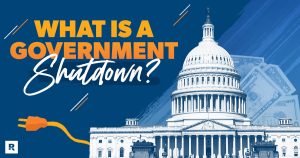Finding affordable home insurance has become especially difficult in states like Florida and California. In fact, some homeowners there are scrambling to qualify for coverage at all. Although these two states arguably have it the worst, that doesn’t mean homeowners in other parts of the country aren’t experiencing challenges. Bankrate’s insurance editorial team took a close look at nationwide trends to identify which parts of the U.S. could face a home insurance crisis next.
What is the current state of home insurance in Florida and California?
Florida and California residents are dealing with a shrinking pool of home insurance providers to choose from. Florida’s home insurance crisis was largely brought on by excessive insurance fraud, while California’s was partially spurred by the state’s complicated insurance regulations, which do not allow some insurance companies to raise rates to a level that accurately reflects risk levels in the state.
Although the Florida and California home insurance crises have some drastic differences in terms of cause, they have one important element in common: extreme weather. Data from the National Centers for Environmental Information show that, between 2019 and 2023, Florida experienced 22 billion-dollar disaster events, including tropical cyclones and severe storms. The costs related to those weather events are estimated to be somewhere around $239.5 billion.
Ever since Hurricane Andrew hit South Florida back in 1992, Florida’s insurance market has been in turmoil. Over the decades, major insurers pulled back or pulled out of the state altogether. The pressure has continued to build — homeowners in coastal parts of the state typically spend thousands of dollars a year on windstorm coverage that’s in addition to basic homeowners insurance and the costs of flood insurance.
— Jeff Ostrowski, Bankrate Principal Reporter, Mortgages
California’s wildfires have also become an increasing threat: of the top 20 most destructive wildfires in California’s history, 15 have occurred in the past decade. Other research supports that human-influenced climate change contributed to a 172 percent increase in the total amount of California land burned by wildfire. In Los Angeles alone, it is estimated that there are nearly a quarter-million homes at risk for wildfire damage, with estimated reconstruction costs somewhere around $183 billion.
Home insurance is designed to financially protect homeowners from a number of perils, many (if not most) of them weather-related. In fact, home insurance statistics from 2023 show that weather-related claims made up almost 88 percent of property damage claims. Florida and California’s proclivity to extreme weather, together with their complicated insurance regulatory environments, have left homeowners with dwindling home insurance options and, in some cases, more expensive premiums.
Which insurance companies have pulled out of Florida and California?
Florida has lost more than 30 home insurance companies in recent years. Most recently, AAA, Farmers and Progressive made headlines for rolling back coverage availability in Florida. As of May 2024, there are 11 Florida home insurance companies in liquidation:
- American Capital Assurance Corporation
- Avatar Property and Casualty Insurance Company
- FedNat Insurance Company
- Florida Speciality Insurance Company
- Guarantee Insurance Company
- Gulfstream Property and Casualty Insurance Company
- Physicians United Plan, Inc.
- Southern Fidelity Insurance Company
- St. Johns Insurance Company, Inc.
- United Property and Casualty Insurance Company
- Weston Property & Casualty Insurance Company
- Windhaven Insurance Company
In California, seven of the 12 largest home insurance companies in the state have either paused or placed heavy restrictions on new policies:
- Allstate
- State Farm
- Farmers
- USAA
- Travelers
- Nationwide
- Chubb
What is the future of home insurance in other states?
Florida and California may receive the most press for their home insurance problems, but the future of home insurance in other states also looks grim. Across the country, home insurance rates are on the rise. Bankrate’s analysis of rate data from Quadrant Information Services shows that, from 2023 to 2024, average home insurance costs rose in 35 of the 50 states. In some states, average costs rose as much as 15 percent year over year. Inflation, coupled with weather trends and the rising cost of reinsurance, can send premiums skyrocketing and make it more difficult for homeowners across the nation to secure an affordable policy.
States where it is hard to get home insurance
Bankrate’s insurance editorial team looked at average rate data to determine which states saw the most drastic home insurance premium hikes from 2023 to 2024. On average, homeowners in Massachusetts, Louisiana, Colorado, Minnesota, Arkansas, Nebraska and Oklahoma faced the highest year-over-year increases.
| Massachusetts | $1,415 | $1,630 | 15% | $215 |
| Louisiana | $4,341 | $4,953 | 14% | $612 |
| Colorado | $2,760 | $2,993 | 8% | $233 |
| Minnesota | $2,261 | $2,433 | 8% | $172 |
| Arkansas | $2,747 | $2,917 | 6% | $170 |
| Nebraska | $5,263 | $5,588 | 6% | $325 |
| Oklahoma | $4,379 | $4,608 | 5% | $229 |
How natural disasters impact home insurance
Natural disasters can make home insurance more expensive for everyone, even those out of the path of a storm. If an insurer is dealing with widespread, expensive property damage claims, it can pass down the cost of those claims to its policyholders by raising premiums. That way, the insurer can recoup some of its losses and remain financially stable. This is especially pertinent now, as insurers are facing massive net underwriting losses. A report from AM Best showed that in the first six months of 2023, the home insurance industry had a net underwriting loss of $24.5 billion — more than four times the net losses recorded during the same period the year prior.
Insurance premiums are largely a calculation of risk: the higher a homeowner’s risk of filing a claim, the more likely it is they will pay a higher premium. When the frequency and severity of natural disasters are on the rise, homeowners can expect their insurance rates to rise in tandem to offset future losses. Those impacted directly by an extreme weather event may also find themselves in a financial bind when it comes time to file a claim. Bankrate’s Emergency Savings Report found that, as of December 2023, 56 percent of U.S. adults wouldn’t pay an emergency expense of $1,000 or more from their savings account — which is about how much most home insurance deductibles cost.
Bankrate insights: Extreme weather’s impact on finances
- 57% of U.S. adults say they have incurred costs due to extreme weather events over the past decade. (Bankrate Extreme Weather survey)
- 57% of U.S. adults also believe that climate, extreme weather events and the environment will have a negative effect on their personal finances. Specifically, 24% expect “very negative” effects. (Bankrate Extreme Weather survey)
How legislative changes have impacted the home insurance market
Insurance is state-regulated, so it is up to each state to chart a path forward to mitigate home insurance crises. In California, Insurance Commissioner Ricardo Lara announced his Sustainable Insurance Strategy, a multipronged approach to incentivize insurers to return to the state. California Governor Gavin Newsom has also proposed a trailer bill requiring faster insurance rate approvals.
In a statement, American Property Casualty Insurance Association (APCIA) Department Vice President for State Government Relations Denni Ritter praised the news: “Expediting the rate review process is a vital component to addressing California’s insurance crisis. We look forward to working with the Administration, Legislature and Department of Insurance on this crucial reform and other reforms necessary to fix our broken regulatory system and increase the availability of insurance for California homeowners, drivers and businesses.”
While it is still too early to see how these proposed changes will affect homeowners, they do signal a positive step forward.
In 2021, Florida Governor Ron DeSantis signed Senate Bill 76 (SB 76) into law to help stabilize premium increases and deter fraudulent insurance claims. Shoddy roofing contractors, in particular, were a major catalyst to Florida’s home insurance crisis.
Louisiana House Bill 611 was signed into law in early May 2024, which is intended to bring competition among insurers back to the state. The bill voids Louisiana’s three-year rule, which prevents home insurance companies from increasing deductibles and canceling or nonrenewing policies that have been in effect for more than three years. Although it is intended to attract insurers, in the short run, it might leave more homeowners uninsured.
What should homeowners do amid the home insurance crisis?
Much of the home insurance crisis is out of homeowners’ hands, but there are a couple of things you can do. Taking the time to chat with a licensed insurance agent can help you understand the finer points of your policy and make sure you are adequately insured. If the cost of construction materials looks high, a licensed agent may help you sort out how much you need to raise your dwelling coverage limit. Working with an insurance broker can also help point you toward the best home insurance company for your needs.
Steps homeowners can take to lessen the risk of nonrenewal
A home insurance nonrenewal is not the same thing as a cancellation. Nonrenewal occurs at the end of your policy period and means your insurance company will let the policy expire. Cancellations can happen at any point during the life of your policy. Both require advance notice from your insurance company, usually between 30 and 60 days depending on your state.
- Fortify your home: Consider ways to protect your home against perils common to your area. If you live in a wildfire risk zone, you could replace your roof with fire-resistant materials. Or, if hurricanes are a concern, you may want to get storm shutters.
- Know your home’s claims history: A Comprehensive Loss Underwriting Exchange (CLUE) report can give insight into your property’s claims history. For instance, if your home has old pipes that have burst in the past, investing in a new plumbing system could help prevent future home insurance claims and make your home a lower risk for your insurer.
- Raise your deductible (if you can): Filing too many home insurance claims can heighten your risk of nonrenewal. Choosing a higher deductible home insurance policy may dissuade you from smaller claims and keep you in good standing with your insurance company. But, just make sure not to raise your deductible to a level you cannot afford.
- Keep on top of home maintenance: Prevention is an ideal course of action for home maintenance. By scheduling routine maintenance and home inspections, you can spot and fix potential home insurance claims before they happen.
- Pay your premium on time: Payment lapses are a common reason for policy nonrenewals. Enrolling in your insurance company’s autopay system can ensure that you never miss a payment.
What options do homeowners have when their insurance has been canceled?
The most important thing to do if your home insurance has been canceled is to find out why. In some cases, it could be an easier fix; perhaps you forgot to pay last month’s premium. Either way, be sure to contact a company representative to find out why your coverage was canceled.
If your home was deemed too high risk to insure, ask your insurance company if there are steps you can take to lower your home’s risk. Maybe the roof has deteriorated and needs repairs, or you need to trim back vegetation in your yard to prevent wildfires from reaching your home. While it’s not always the case, working with your home insurance company to make small improvements could help you keep your policy.
Your old provider may not change its mind about canceling your policy. In that case, you can shop around for a new one, but finding a new private provider could be harder. A home insurance cancellation is something of a red flag for many insurers, and they may be more hesitant to write you a policy. As a last resort, you can try getting a policy from a surplus line carrier or from your state’s FAIR Plan. However, these policies usually cost more and may provide limited coverage compared to a standard policy.
Frequently asked questions
-
The issue is largely tied to climate change and extreme weather. As climate change makes weather events like wildfires, hurricanes and floods more damaging, the financial losses after these events become greater. When the risk and severity of a loss increase, home insurance premiums usually increase with it.
-
Florida and California have seen a mass exodus of insurance companies, but they are not the only states insurance companies are pulling out of. Homeowners in Massachusetts, Louisiana, Colorado, Minnesota, Arkansas, Nebraska and Oklahoma may also struggle to find a policy.
-
According to Bankrate’s research, USAA, Allstate, Chubb, Amica, Travelers and State Farm may be some of the best home insurance companies. However, the best home insurance company will be different for every homeowner depending on your financial situation, location, desired coverage, budget and more.
-
As of May 2024, Vermont has the cheapest home insurance on average, with homeowners paying $806 per year. Florida is the most expensive state for home insurance. In Florida, it costs an average of $6,366 per year for a policy with a $300K dwelling limit.
Read the full article here
















